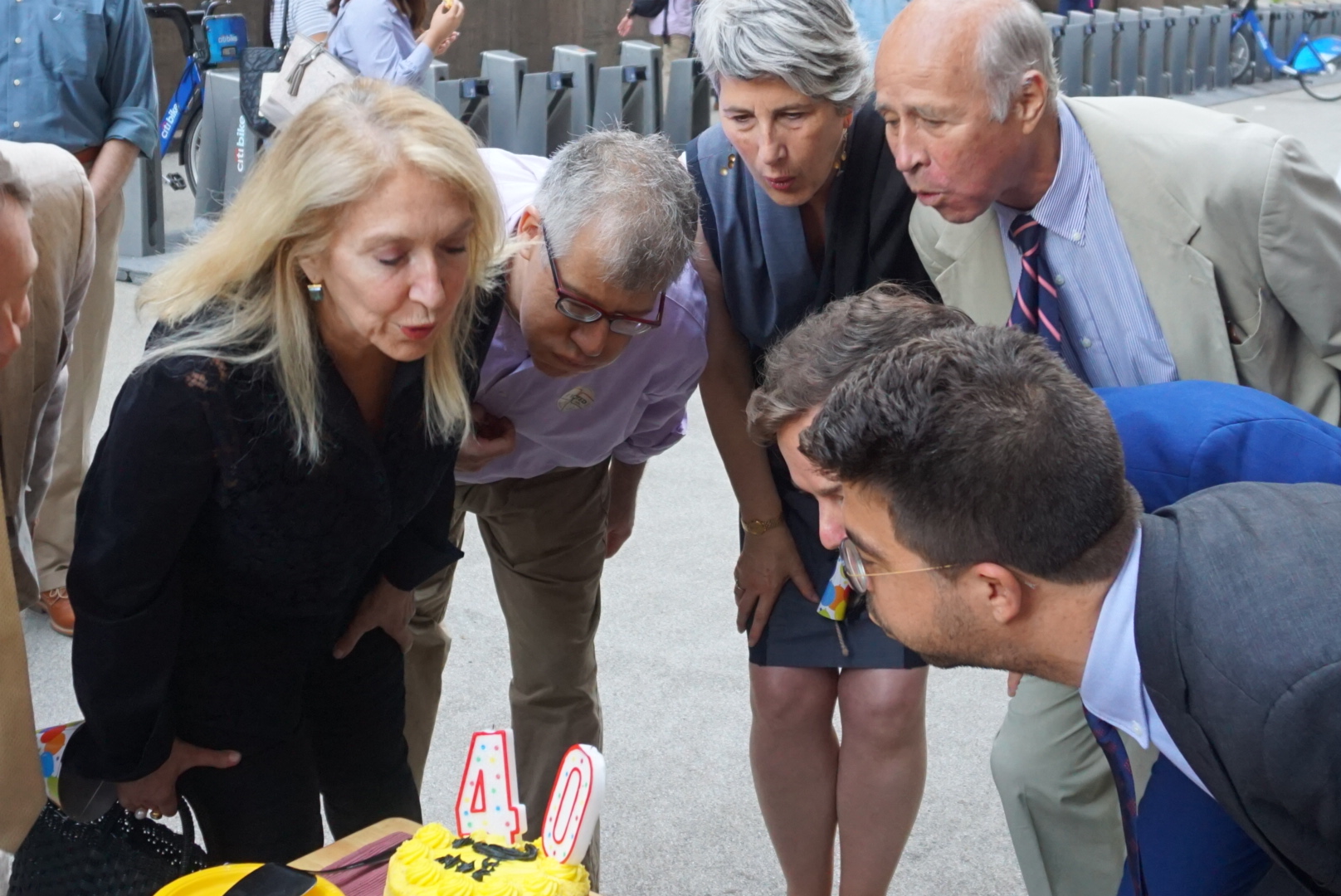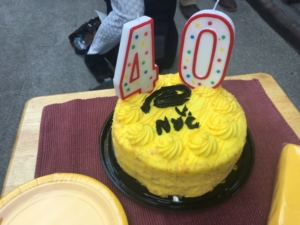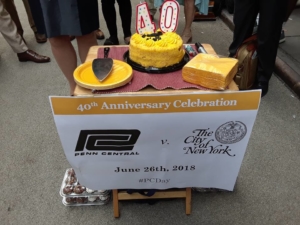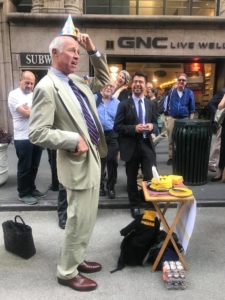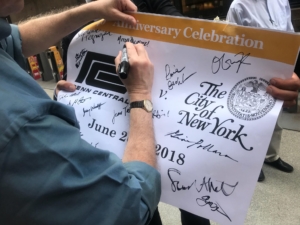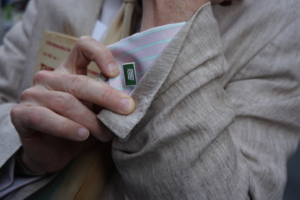This article was written by Adrian Untermyer, an urbanist who advocates for historic preservation and improved transportation in Greater New York and nationwide. Mr. Untermyer is former Deputy Director of the Historic Districts Council and began his career as a Legal Advocate at the Urban Justice Center. Now a second-year student at the University of Colorado School of Law, Untermyer is a member of the Law Review and interns in Governor John Hickenlooper’s Office of Legal Counsel. For further information and to keep in touch, visit him online at www.adrianuntermyer.com and follow him on Twitter and Instagram.
The Historical Society of the New York Courts was a proud co-sponsor of this event.
Photo: Laurie Beckelman (Associate Director, The Shed), Samuel D. Albert (Architectural Historian), Elizabeth Goldstein (President, Municipal Art Society), Kent Barwick (Former President, Municipal Art Society), Brad Vogel (Executive Director, New York Preservation Archive Project), and Adrian Untermyer (Founder and Chair, Penn Central Day Committee) blow out the “Birthday Cake’s” candles. (Photo by Shanique D. Bundy)
On Tuesday, June 26, the U.S. Supreme Court released its decision in Trump v. Hawaii, which was among the Court’s most controversial cases of 2018. But on a packed pedestrian plaza across from Grand Central Terminal, fifty New Yorkers with party hats and noisemakers toasted a different case decided exactly forty years earlier.
The occasion was the 40th Anniversary of Penn Central v. City of New York, the U.S. Supreme Court case that helped save Grand Central Terminal from destruction. The case also upheld the constitutionality of New York City’s Landmarks Law, which serves as a model for historic preservation statutes nationwide.
I noticed the upcoming anniversary while reading Penn Central v. City of New York during my first year of law school at the University of Colorado. As fortune had it, I planned to return to New York a few weeks later for an internship with Justices Rosalyn H. Richter and Ellen Gesmer of the Appellate Division’s First Department.
Organizing a celebration in my free time would provide an opportunity to combine three of my passions: historic preservation, railroad history, and the law. It would also offer a chance to remind civic-minded New Yorkers of a monumental success.
The story of Penn Central v. City of New York begins in 1968, when the newly formed (and cash-strapped) Penn Central Railroad grabbed headlines with two dramatic redevelopment plans for Grand Central.
In the first plan, the railroad proposed ripping out the landmarked Terminal’s innards — including its main waiting room — and building a modernist skyscraper on top. A second and more dramatic iteration proposed destroying the Beaux-Arts terminal’s iconic façade entirely. Both plans were fashioned by the infamous Brutalist architect Marcel Breuer, whose designs, among others, include the former Whitney Museum on Manhattan’s Upper East Side.
Since Grand Central Terminal was already designated a New York City Landmark, Penn Central first had to obtain approval from the Landmarks Preservation Commission. Although the Commission rejected Penn Central’s plans, the Railroad successfully sued in New York County Supreme Court. This would have left Penn Central free to start the wrecking balls swinging.
In response, ordinary New Yorkers sprang into action. Still reeling from the Pennsylvania Railroad’s demolition of its flagship Manhattan station just a few blocks west, everyday citizens joined forces with civic and architectural luminaries including Ed Koch, Philip Johnson, Bess Myerson, and the legendary Jacqueline Kennedy Onassis to challenge the Penn Central’s plans all the way to the U.S. Supreme Court. The coalition was determined: Penn Central could not repeat the mistakes of its corporate predecessor.
The U.S. Supreme Court released its opinion in Penn Central v. City of New York on June 26, 1978. Writing for the Court, Justice William J. Brennan held that New York City’s Landmarks Law did not violate the U.S. Constitution’s Fifth Amendment by protecting Grand Central Terminal. It was the first time the Court weighed in on historic preservation statutes, and Penn Central set a powerful precedent that is still observed to this day. As a result, historic buildings across America owe their continued existence to this “landmark” case.
Penn Central Day honored this legacy with a birthday cake for the Supreme Court case along with an array of speakers and two lively choruses of “Happy Birthday” led by Brooklyn-based preservationist and musician Olivia K.
The list of partygoers also included former President of the Municipal Art Society Kent Barwick and his former assistant Laurie Beckelman, who shared their memories of deploying Jacqueline Kennedy Onassis as their not-so-secret weapon to galvanize public support for saving Grand Central. Both Beckelman and Barwick continued on to chair the Landmarks Preservation Commission in later years.
“Grand Central Terminal is the Forrest Gump of New York City Landmarks,” I explained in my remarks, “as it appears throughout American culture and is beloved by all who know it.”
“We are glad and grateful to have thrown this iconic structure — and the case that helped save it — a party to remember.”
Click on any image to start the slideshow of photos from the event:

